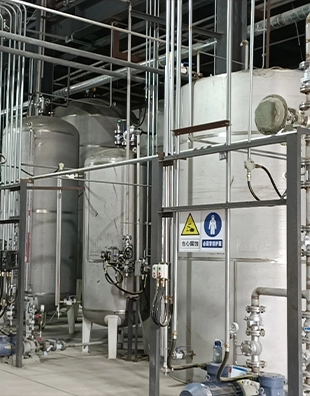polymaleic anhydride
Exploring Polymaleic Anhydride A Versatile Polymer for Modern Applications
Polymaleic anhydride (PMA) is a remarkable polymer derived from maleic anhydride, a chemical noted for its versatility and wide range of applications. PMA has garnered attention in various fields, including pharmaceuticals, agriculture, and materials science, due to its unique chemical properties and adaptability.
Chemical Structure and Properties
Polymaleic anhydride is formed through the polymerization of maleic anhydride, resulting in a linear structure with reactive anhydride functional groups. These functional groups are pivotal, as they enable PMA to easily undergo further chemical modifications. The polymer is typically a white, crystalline solid that is soluble in various organic solvents and exhibits a high degree of thermal stability. Its molecular weight can vary significantly, influencing its physical properties and suitability for different applications.
The unique structure of PMA grants it several advantageous properties, such as good adhesion, film-forming ability, and resistance to degradation. Moreover, PMA can form copolymers with other monomers, which can enhance its properties and broaden its applicability. This flexibility makes PMA a key component in developing advanced materials.
Industrial Applications
One of the most notable applications of polymaleic anhydride is in the field of water treatment. PMA is often used as a scale inhibitor in industrial cooling systems and oilfield applications. It effectively prevents the formation of scales and deposits in pipes and equipment, which can lead to inefficiencies and costly maintenance. By controlling scale formation, PMA helps to prolong equipment life and reduce operational costs.
In addition to water treatment, PMA is utilized in the formulation of detergents and surfactants. Its ability to enhance the cleaning efficiency of these products makes it a valuable additive. PMA helps to capture and disperse dirt and grease, improving the overall effectiveness of household and industrial cleaning agents.
polymaleic anhydride

Furthermore, PMA finds its role in the production of dispersants for pigments and fillers in paints and coatings. Its ability to stabilize suspensions ensures that paints have a uniform consistency and appearance, which is crucial for both aesthetic and functional purposes.
Pharmaceutical and Biomedical Applications
In the pharmaceutical industry, polymaleic anhydride holds promise as a drug delivery system. Due to its anhydride groups, PMA can form attachments with various molecules, allowing for the controlled release of therapeutic agents. This capability is particularly beneficial in targeting specific tissues or organs, thus enhancing the efficacy of treatments while minimizing side effects.
Moreover, PMA is investigated for its potential in biomedical applications, such as tissue engineering and regenerative medicine. Its biocompatibility and ability to support cell adhesion make it a candidate for scaffolding materials, which can promote cellular growth and tissue regeneration. Research is ongoing to explore its full potential in this dynamic field.
Challenges and Future Directions
Despite its many advantages, the use of polymaleic anhydride also presents challenges. The reactivity of its anhydride groups can lead to instability under certain conditions, requiring careful handling and formulation. Researchers are continually investigating methods to optimize its stability and expand its application range.
Looking ahead, the future of polymaleic anhydride appears promising. As industries seek more sustainable and efficient solutions, the demand for versatile polymers like PMA is likely to increase. Advances in polymer chemistry and material science will undoubtedly unlock new potentials for this compound, paving the way for innovative applications across various sectors.
In conclusion, polymaleic anhydride is a multifaceted polymer with a vast array of applications in industries ranging from water treatment to pharmaceuticals. Its unique properties and versatility make it an invaluable resource in the development of new technologies and materials. As research continues, PMA is set to play an even more significant role in addressing contemporary challenges in science and industry.
-
Pbtc Scale InhibitorPBTC: A Scale Protector for Industrial Water TreatmentNewsAug.05,2025
-
Organic Phosphonate: An Efficient Defender in the Field of Scale InhibitionNewsAug.05,2025
-
Hydrolyzed Polymaleic Anhydride: Green Pioneer in Scale Inhibition FieldNewsAug.05,2025
-
PAPEMP Polyamino Polyether Methylene Phosphonic Acid For SaleNewsAug.05,2025
-
Flocculant Water Treatment: A Pioneer in Purification in the Field of Water TreatmentNewsAug.05,2025
-
Benzyl Isothiazolinone: An Efficient and Broad-Spectrum Antibacterial Protective GuardNewsAug.05,2025





